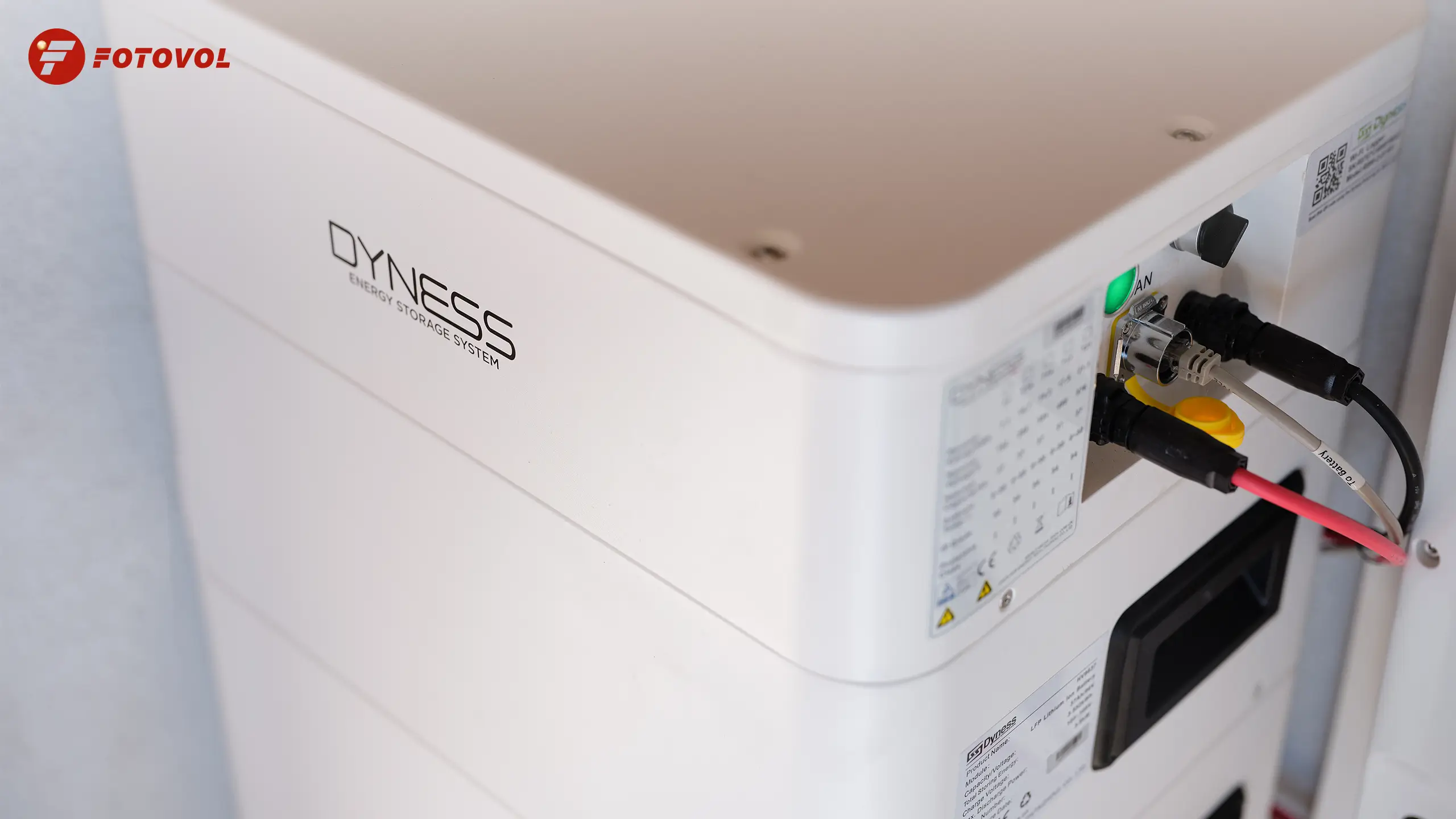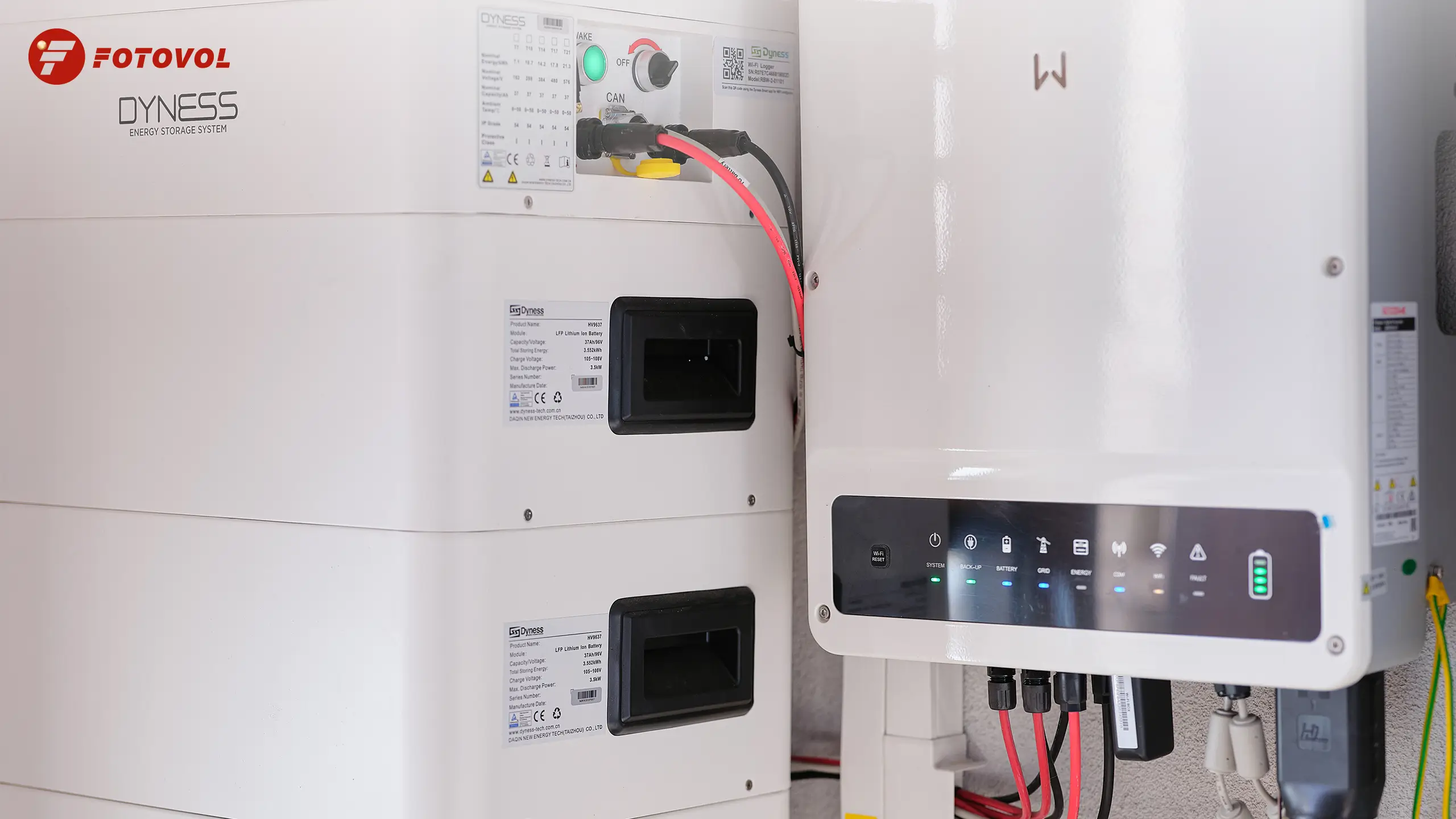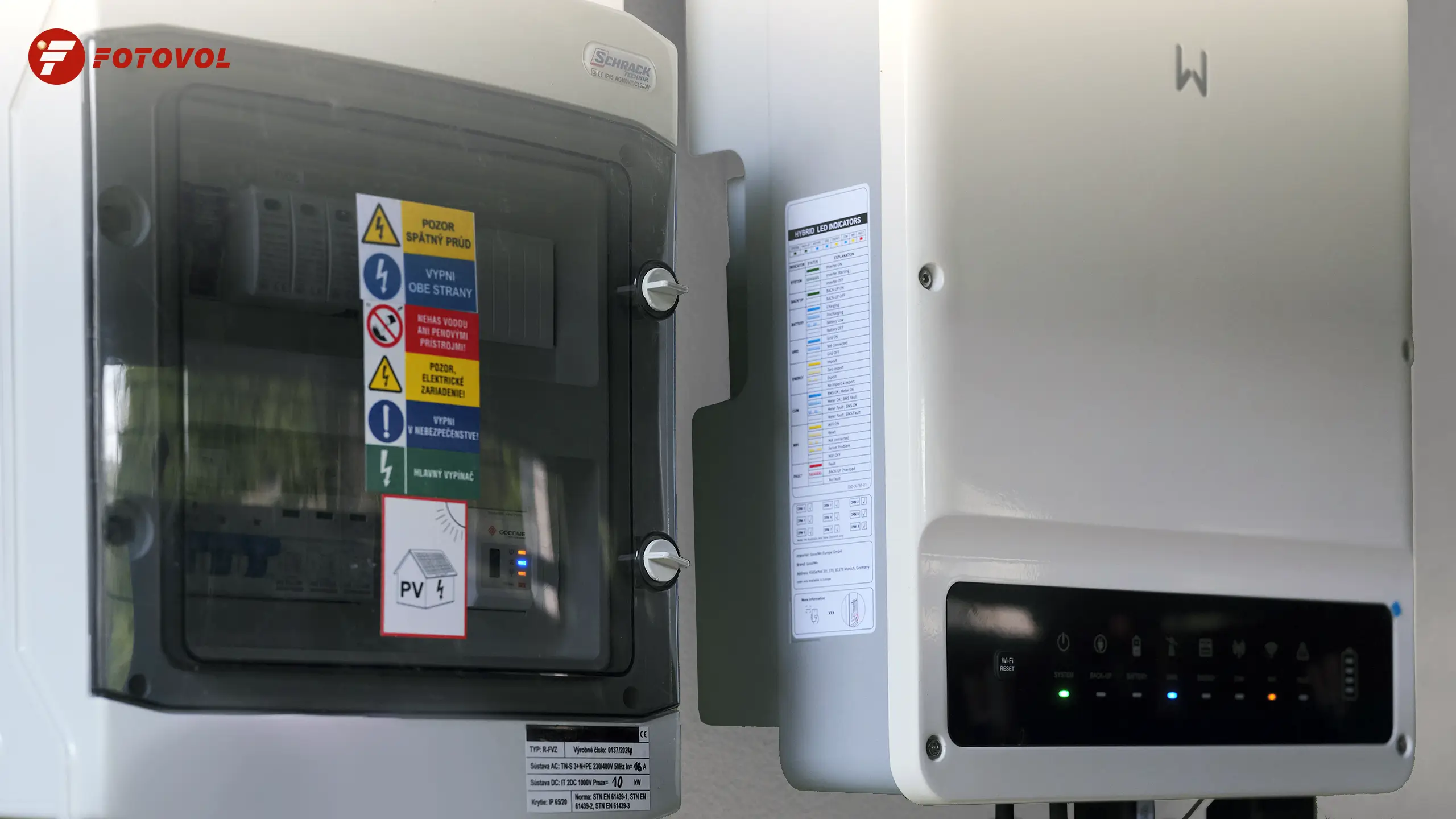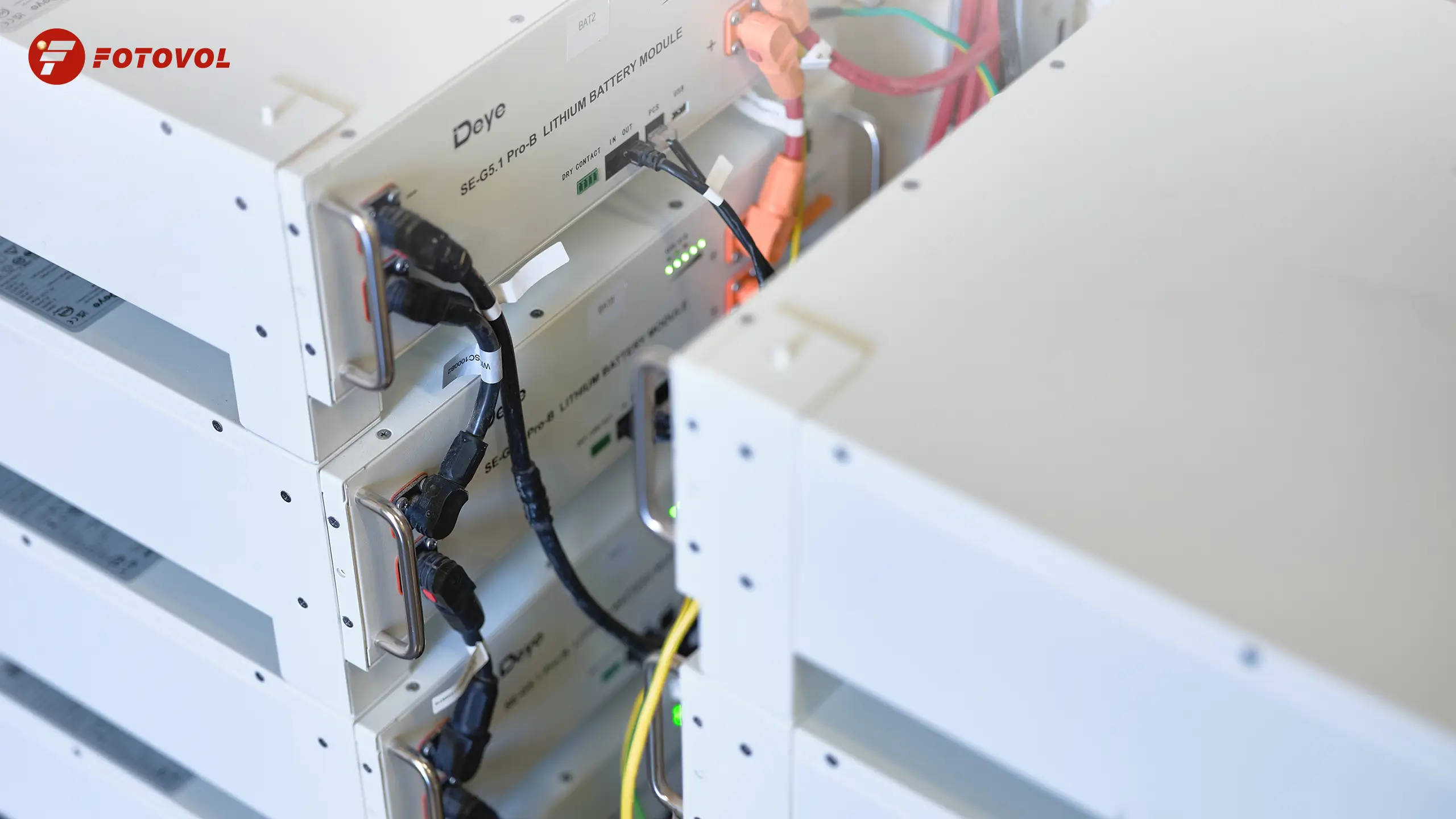Photovoltaics with physical batteries
Advantages of physical batteries in photovoltaic devices.
Photovoltaic devices are gaining popularity, mainly due to the growing need for sustainable and renewable energy sources. One of the key components of these devices are batteries, which allow you to store the energy produced by solar panels for later use. Choosing the right battery is crucial to ensuring the efficiency and long life of the entire system. In this article, we will discuss how to choose the battery that best suits your needs.

Which photovoltaic array contains a battery?
Hybrid photovoltaic device is a full-fledged photovoltaic system with a hybrid inverter that combines photovoltaic panels and lithium batteries. The power from the panels is converted to AC (alternating current) by the inverter at an efficiency of more than 97% and immediately supplied to cover the household electricity consumption. The inverter measures the current flow on the phase and maintains the electricity consumption from the grid to the electricity meters.
When the inverter detects that the PV system is producing more energy than the household is currently using, it will start storing the excess energy in lithium batteries for later use. When the batteries are fully charged, the inverter will send the excess energy to the grid. If the household is using more energy than the solar panels can produce, the inverter will draw energy from the batteries, thereby trying to keep the grid power consumption to a minimum. If the combined power of the PV array and batteries is not enough to cover the household's needs, energy drawn directly from the grid is needed.

Whether a hybrid photovoltaic system makes sense for your home depends on the following factors:
1. Energy needs:If your home has a significant electricity consumption, especially during the day, a hybrid system can be very useful. It allows you to use your own solar energy when it is available and store excess energy in batteries for later use, such as at night or during power outages.
2. Network stability:
If you live in an area with frequent power outages, a hybrid system with a battery can ensure that you still have access to electricity even when the distribution grid is unavailable.
3. Savings and return on investment:
A hybrid system can increase your energy independence, leading to long-term savings on your electricity bills. Additionally, investing in a battery can reduce your dependence on external electricity supplies and protect you from rising energy prices.
4. Budget:
Hybrid systems are typically more expensive than standard on-grid systems without batteries. If your budget allows for the investment in batteries, a hybrid system may be a good option. However, if you are on a tight budget, you may want to consider starting with a standard on-grid system and adding batteries later.
5. Ecological perspective:
If sustainability is important to you and you want to reduce your carbon footprint, a hybrid system could be a great option. It allows you to maximize the use of renewable energy, which is more environmentally friendly.

Advantages of photovoltaics with battery:
Batteries bring a number of benefits to the current photovoltaic market. Their main advantage is the ability to ensure a continuous supply of energy, which is crucial for maintaining the stability of the energy system. They also increase energy efficiency by allowing the storage of excess energy for later use. They support decentralized energy production, allowing individuals and businesses to not only produce their own energy, but also to store it efficiently.
In the field of renewable energy sources, batteries are invaluable because they help bridge power outages when the sun is not shining enough to cover household consumption. Another great advantage is the ability to use battery power at times when grid electricity is more expensive, optimizing your consumption and saving costs.

Photovoltaics with battery - which one to choose?
We want only the best for our clients, which is why we choose lithium-ion batteries, which are gaining popularity due to their higher energy density, longer life, and lower maintenance requirements compared to lead-acid batteries. Although they are more expensive, their long-term efficiency and lower overall weight can justify this cost.
Our selection:
DEYE RW-F10.6
RW-F10.6 is a state-of-the-art lithium iron phosphate (LFP) battery designed for safe, high-performance and flexible energy storage solutions. This cobalt-free battery offers long life, high energy density and low-voltage safety connection, making it an ideal choice for both residential and commercial applications.
Dyness Tower T7-21
Dyness Tower batteries are a range of high-voltage, stackable batteries that impress with their easy installation, robust design and modern look. The battery is scalable from 7.1 to 21.3 kWh. The battery is compatible with GoodWe ET hybrid inverters.
Green for households (SK):
From 29. 4. 2024, we will be among the first to provide our clients with a subsidy for photovoltaics - the voucher solution system is already launched. Do not hesitate to contact us and request a non-binding quote today. We guarantee our clients to receive the Green voucher for households in time, before the funds run out.

Solar energy available to everyone!
Subscribe to our newsletter
Get the latest updates and exclusive offers straight to your inbox.
By clicking Subscribe, you agree to our terms and conditions.